Hydrangeas are garden superstars with their big, bold blooms. These stunning shrubs can transform any outdoor space into a colorful paradise. Growing hydrangeas is a great way to add beauty to your garden.
Hydrangeas come in various shapes and sizes. You'll find classic mopheads and delicate lacecaps. They work well in borders, containers, or as stand-alone plants.
Don't fret if you're new to gardening. Hydrangeas are friendly to both beginners and experts. With proper care, these beauties will thrive year after year.
This guide will help you grow lush, vibrant hydrangeas. Your neighbors will be amazed by your gorgeous garden display.
Understanding Different Hydrangea Varieties for Your Garden
Hydrangeas offer stunning beauty for any garden. These versatile shrubs boast bold blooms and unique leaf shapes. Let's explore four popular types to enhance your landscaping projects.
Bigleaf Hydrangeas
Bigleaf hydrangeas showcase large, colorful flowers. They grow best in partial shade, away from harsh afternoon sun. These plants create vibrant borders or eye-catching focal points in gardens.
Oakleaf Hydrangeas
Oakleaf hydrangeas feature distinctive, oak-shaped leaves. They prefer slightly shaded areas and display beautiful fall colors. These varieties excel in woodland gardens or natural settings.
Panicle Hydrangeas
Panicle hydrangeas love sun and are very hardy. Their cone-shaped blooms start white and often turn pink over time. These shrubs shine in mixed borders or as standalone plants.
Climbing Hydrangeas
Climbing hydrangeas add vertical interest to gardens. They cling to walls or fences, creating a lush green backdrop. Their white lacecap flowers make them perfect for covering structures or adding depth.
Knowing these hydrangea types helps you pick the right plants for your garden. Each variety brings unique charm to your outdoor space. Use them creatively to transform your landscape.
Perfect Soil Conditions and Planting Tips for Hydrangeas
Hydrangeas need specific soil conditions to thrive. Proper care from the start ensures lush blooms. Let's explore how to grow these stunning shrubs successfully.
Ideal Soil pH and Composition
Hydrangeas prefer well-draining, rich soil. Most varieties thrive in pH levels between 5.5 and 6.5. For blue flowers, aim for more acidic soil (pH 5.5).
Pink blooms need slightly alkaline soil (pH 6.5). Add organic matter to improve soil structure and drainage.
Best Time to Plant Hydrangeas
Spring or fall are ideal for planting hydrangeas. Cool temperatures and ample rainfall help establish strong roots. Avoid planting during summer heat or winter frost.
Choose a cloudy day to reduce transplant shock. This will give your plants the best start.
Proper Spacing and Sun Exposure
Space hydrangeas 3 to 10 feet apart, depending on the variety. This allows for proper air circulation and growth.
Most hydrangeas prefer morning sun and afternoon shade. In cooler climates, they can tolerate more sun. Protect them from harsh afternoon rays in hot regions.
Good hydrangea care starts with planting. Choose the right spot and prepare the soil well. Give your plants room to grow. These steps will help your hydrangeas flourish.
Essential Care and Maintenance Guide
Proper hydrangea care leads to beautiful, vibrant blooms. Water regularly to keep soil moist but not waterlogged. These plants thrive in well-draining soil that retains moisture.
Choose the right hydrangea fertilizer for healthy growth. Use a balanced, slow-release option in early spring and mid-summer. Apply it around the plant's base, avoiding stems and leaves.
Here are some tips for successful hydrangea care:
- Water deeply once or twice a week, depending on rainfall
- Add a layer of mulch to retain moisture and suppress weeds
- Prune at the right time for your specific hydrangea variety
- Monitor for pests and diseases regularly
Hydrangeas like morning sun and afternoon shade in most areas. Shield them from harsh afternoon light to prevent leaf burn. In cooler places, they can handle more sun.
Be patient with your hydrangeas. They may need time to grow fully and bloom. Consistent care will lead to stunning, colorful flowers.
Mastering Hydrangea Color Changes
Hydrangeas offer a unique chance to play with color in your garden. You can change their bloom colors, making them fascinating plants to grow. Let's explore how to achieve stunning hues in your hydrangeas.
Adjusting Soil pH for Blue Blooms
For blue blooms, lower your soil's pH. Add aluminum sulfate or garden sulfur to make the soil more acidic. This encourages aluminum uptake, resulting in vibrant blue flowers.
Hydrangea color change takes time. Be patient as you work to achieve your desired hues.
Creating Pink and Purple Hues
For pink blooms, aim for a higher soil pH. Add lime to increase alkalinity and limit aluminum absorption. This leads to pink flowers.
Purple hues often occur when soil pH is near neutral. This creates a mix of pink and blue pigments in the blooms.
Maintaining White Hydrangeas
White hydrangeas are different. Their color comes from genetics, not soil pH. To keep white hydrangeas looking pristine:
- Provide adequate sunlight
- Ensure proper watering
- Fertilize regularly
- Prune at the right time
Master these techniques to enhance your hydrangea growing skills. Create a stunning color display in your garden. Try different methods to find what works best in your unique conditions.
Seasonal Pruning Techniques for Healthy Growth
Pruning hydrangeas keeps them healthy and promotes beautiful blooms. Knowing when and how to prune different varieties is essential. Proper care ensures your hydrangeas thrive.
When to Prune Different Varieties
Timing is crucial for pruning hydrangeas. Old-wood bloomers need pruning right after flowering. These include bigleaf and oakleaf hydrangeas.
New-wood bloomers prefer late winter or early spring pruning. Panicle and smooth hydrangeas fall into this category.
Tools and Methods for Proper Pruning
Use clean, sharp tools for effective pruning. Bypass pruners work well for most cuts. Loppers are best for thicker stems.
Follow these steps:
- Remove dead or weak stems
- Cut back overgrown branches
- Shape the plant as desired https://heimoase.com
Deadheading and Maintenance Trimming
Regular deadheading improves hydrangea appearance. Remove faded blooms just below the flower head. This encourages new growth and extends flowering.
Maintenance trimming helps manage plant size and shape. Do this throughout the growing season for best results.
Each hydrangea variety has unique pruning needs. With practice, you'll master this art. Your hydrangeas will flourish year after year.
Troubleshooting Common Hydrangea Problems
Hydrangeas are beautiful plants, but they can face challenges. Pests and diseases may affect them at times. Early detection of leaf discoloration or wilting blooms is crucial for proper care.
Common issues include powdery mildew, leaf spot, and aphid infestations. Good garden hygiene is essential for tackling these problems. Remove fallen leaves and prune affected areas to maintain plant health.
Natural solutions like neem oil or insecticidal soap can help control pests. For fungal diseases, try using a copper-based fungicide. Proper watering and air circulation can prevent many issues.
Environmental stress can impact hydrangeas too. Too much sun may scorch leaves Zeitumstellung 2024, while too little can reduce blooming. Adjust your plant's location if needed to optimize its growth conditions.
Soil pH imbalances can cause nutrient deficiencies, affecting leaf color and plant health. Regular soil testing helps maintain optimal conditions for your hydrangeas. With care, most hydrangea problems can be solved.
Don't get discouraged if issues arise - it's normal in gardening. Address problems quickly and maintain consistent care. You'll enjoy healthy, vibrant hydrangeas for years to come.
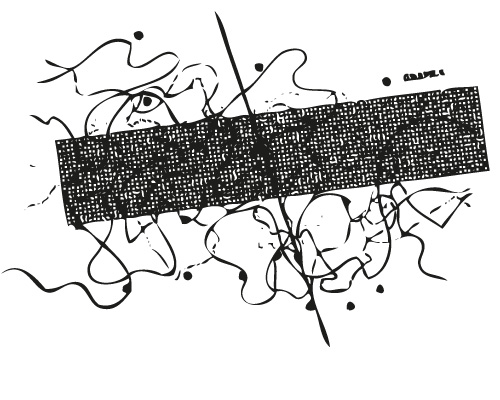
Komposition
In Kleingruppen (2 – 4 Personen) werden die persönlichen Arbeiten der Studierenden besprochen. Je nach Semesterstufe werden gezielte oder offene Aufgaben gestellt, die immer genügend Spielraum für vielfältige künstlerische und ästhetische Ausarbeitung offen lassen.
Der individuelle Zugang jedes/jeder Studierenden wird berücksichtigt, gleichzeitig wird versucht, technische oder ästhetische Schemata zu hinterfragen und neue formale und klangliche Zugänge zu finden. Auch die Betreuung der schriftlichen Abschlussarbeit ist Teil dieses Fachs.
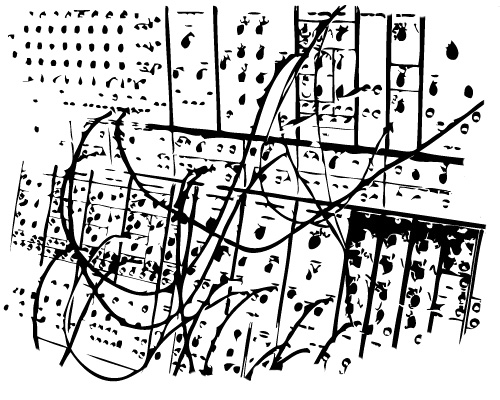
Studiotechnik
In dieser Vorlesung werden klassische und experimentelle Methoden der elektroakustischen Transformation, in Realtime und/oder Offline behandelt. Mit den Methoden sind natürlich auch die praktischen Geräte und Maschinen, oder eben die Programme, die Software und deren Bedienung und Handhabung ein Thema. Gegliedert ist die Vorlesung im ersten Semester mit klassisch analogen Instrumenten, wie Tonband, Mischpult, Mikrofone, Analogsynthesizer. Im zweiten Semester werden die Programmiersprachen Max und Pure Data ausgebreitet, mit denen in weiterer Folge dann die einzelnen Transformationstechniken erklärt werden. Weitere Schwerpunkte der Vorlesung sind:
- geschichtliche Darstellung der technischen Entwicklung in der elektroakustischen Musik
- Produktionstechniken im Studio von Mono bis Mehrkanal
- Postproduktion allgemein und speziell in der elektroakustischen Musik
- Zeitparadoxa, Giant FFT etc.
Im Einzelunterricht Praktikum geht es um ein Heranführen an technisch-künstlerischen Umsetzungen. Der/Die Studierende erfährt eine “künstlerische Zusammenarbeit” bei der Entstehung oder Realisierung eigener Projekte.
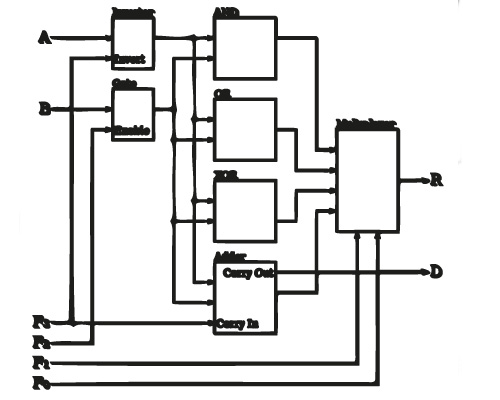
Music Processing
Musikproduktion und Tonverarbeitung durch den Einsatz von Mikroprozessoren und Computern.
Klangsynthese, digitale Filter, digitale Audioeffekte, räumliches Audio.
Sampling, Klangwahrnehmung, Quantisierung, Codierung.
Programmierung: Audio-spezifische Software-Umgebungen, Struktur von Programmen.
Musikinformations-Theorie, computergestützte Komposition, Musik-Informations-Retrieval und Audio-Content-Analyse.
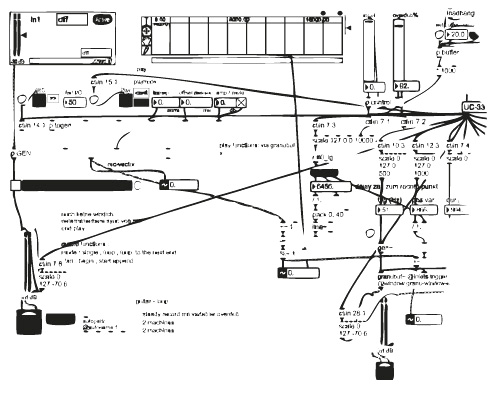
Live-Elektronik
Dieses Seminar setzt sich aus einem theoretischen und einem praktischen Teil zusammen. Einerseits werden Live Elektronische Realisierungen in der zeitgenössischen Musik, als auch in anderen musikalischen Genres wie Performance, Improvisation besprochen, als auch praktische Erfahrung in Konzerten, Klassenabenden gemacht. Methoden von Live Processing werden anhand der Programmiersprache Max besprochen und programmiert.
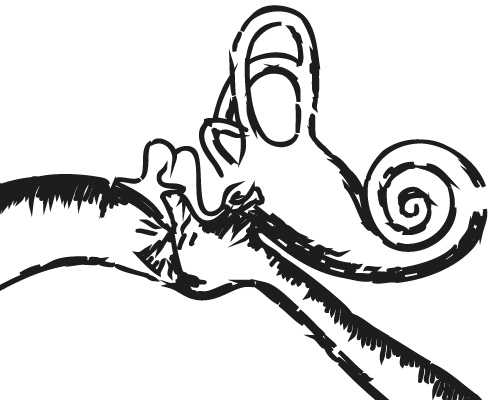
Akustik
Darstellung des Phänomens “Klang” aus physikalischer Sicht unter der besonderen Berücksichtigung des Zusammenklangs mehrerer Instrumente, Einführung in die Schwingungslehre, Apperzeption akustischer Signale, Elementare Wellenformen der Elektroakustik, physikalische Darstellung der Frequenzverteilung (Sonogramme), Signaldarstellung im Zeitbereich und Frequenzbereich, FFT, akustischer Signatur der Instrumente, Topologie der Instrumentation im klanglichen Kontext, Zusammenklang mehrerer Schallquellen (mögliche gegenseitige Beeinflussungen der Spektren), Klanganalyse ausgewählter Beispiele der Musikliteratur.
Peter Ablinger/ Maryanne Amacher/ Oren Ambarchi/ Laurie Anderson/ Aphex Twin/ Robert Ashley/ Sam Auinger/ Milton Babbitt/ Natasha Barrett/ Louis and Bebe Barron/ William Basinski/ François Bayle/ the Beatles/ William Bennett/ Félix Blume/ Konrad Boehmer/ Pierre Boulez/ Gavin Bryars/ Earle Brown/ Herbert Brün/ William S. Burroughs/ John Cage/ Janet Cardiff/ Wendy Carlos/ Carl Michael von Hausswolff/ Angélica Castelló/ Michel Chion/ Henri Chopin/ John Chowning/ Nicolas Collins/ Tony Conrad/ Peter Cusack/ Pan Daijing/ Paul DeMarinis/ DJ Spooky/ Francis Dhomont/ John Duncan/ Brian Eno/ Franco Evangelisti/ Farmers Manual/ Morton Feldman/ Mark Fell/ Christian Fennesz/ Luc Ferrari/ Beatriz Ferreyra/ Klaus Filip/ Bill Fontana/ Stefan Fraunberger/ Glenn Gould/ Thomas Grill/ Florian Hecker/ Robert Henke/ Pierre Henry/ Christoph Herndler/ Dick Higgings/ Concepción Huerta/ Ryoji Ikeda/ France Jobin/ G.X. Jupitter-Larsen/ Zbigniew Karkowski/ Katharina Klement/ Volkmar Klien/ Milan Knížák/ Dieter Kovacic/ Thomas Köner/ Gottfried Michael Koenig/ Kraftwerk/ Johannes Kreidler/ Ernst Krenek/ Christina Kubisch/ Tilman Küntzel/ Peter Kutin/ La Monte Young/ Bernhard Lang/ Bernhard Leitner/ György Ligeti/ Francisco Lopéz/ Alvin Lucier/ Christian Marclay/ Maximilian Marcoll/ Max Mathews/ Merzbow/ Wolfgang Mitterer/ Conlon Nancarrow/ Max Neuhaus/ Olga Neuwirth/ Phill Niblock/ Carsten Nicolai/ Jérôme Noetinger/ Thomas Noll/ Pauline Oliveros/ Daphne Oram/ Bob Ostertag/ Oval/ Bernard Parmegiani/ Pink Floyd/ Franz Pomassl/ Dick Raaymakers/ Günther Rabl/ Eliane Radigue/ Peter Rehberg/ Guy Reibel/ Steve Reich/ Jean-Claude Risset/ Manuel Rocha Iturbide/ Steve Roden/ Jim O’Rourke/ Maja Osojnik/ Billy Roisz/ Luigi Russolo/ Tristan Perich/ Lee “Scratch” Perry/ Radian/ Maja S. K. Ratkje/ Terry Riley/ Ryuichi Sakamoto/ Jorge Sanchez Chiong/ Erik Satie/ Scanner/ Pierre Schaeffer/ Elisabeth Schimana/ Marcus Schmickler/ Michael J. Schumacher/ Kurt Schwitters/ Phillip Sollmann/ Laurie Spiegel/ Morton Subotnick/ Burkhard Stangl/ Steven Stapleton/ Karlheinz Stockhausen/ James Tenney/ Terre Thaemlitz/ Yasunao Tone/ David Tudor/ Mika Vainio/ Ilpo Väisänen/ Annette Vande Gorne/ Edgard Varèse/ Mario de Vega/ Jennifer Walshe/ Jana Winderen/ Trevor Wishart/ Christian Wolff/ Yannis Xenakis/ Yan Jun/ Samson Young/ Frank Zappa/ Marta Zapparoli
STUDIENINFORMATION
Dokumente und Links
Informationsblatt Lehrgang
Studienplan
Semesterplan auf mdwOnline
Lehrgang
Lehrgangsdauer: 6 Semester
Kontakt:
elak@mdw.ac.at
Anmeldung / Zulassungsprüfung
- Glory Casino Bangladesh ✅ Play Online | Login Now for Exciting Wins!
- Join The Banger Casino Jackpot Fever
- Die Auswirkungen von steuerfreien Wetten auf die Spielerfahrung
- Retatrutid in Österreich: Wie Sie mit dem Online-Kauf Zeit und Geld sparen können
- How SoundCloud Plays Can Enhance Your Track’s Popularity
